Leading sunshine coast
knee surgeon
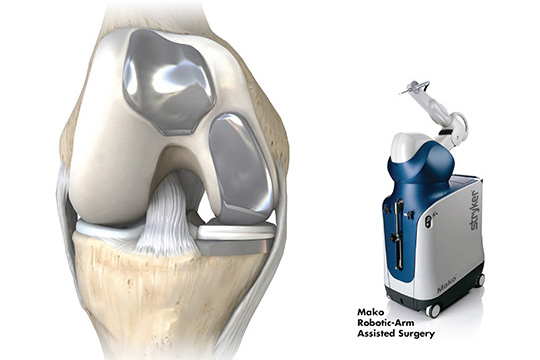
Minimally invasive computer navigated & robotic assisted knee replacement
Dr Hamish Gray offers expertise in patient-specific knee surgery. Computer navigated knee replacement takes the guesswork out of partial and total knee replacements, decreasing human errors during bone cutting.
It provides real-time 3D images of your knee and the surgical instruments during surgery. Robotic assisted surgery is a further development of this technology and allows for even greater accuracy and reduced soft tissue damage.
The surgery is performed entirely by Dr Gray. His goal is to ensure the long-term success of your joint replacement and avoid infection, failure and repeat surgery.
Non operative treatment of knee conditions
We offer and co-ordinate non-operative management of knee conditions. It is sometimes said that "the good surgeons know how to operate, better ones know when to operate and the best surgeons know when not to operate".
When the decision is made not to operate Dr Gray can co-ordinate the treatment plan on the Sunshine Coast. This may including physical therapy, pain relief & rehabilitation. Pain relief option can include injections steroids, hyaluronic acid and platelet-rich plasma.
INJECTIONS:
1. PLATELET RICH PLASMA (PRP) JOINT INJECTION
PRP therapy uses a concentrated portion of your blood that is obtained by spinning it in a centrifuge. This solution is then injected into your knee to provide relief from osteoarthritic pain. Whilst the effects of PRP wear off after approximately 3 months, it can alleviate discomfort, allowing you to engage in physiotherapy as a non-operative approach or in preparation for surgery
2. HYALURONIC ACID JOINT INJECTION
Hyaluronic acid is a synthesised version of a natural lubricant present in your knee joint that can effectively alleviate pain and improve joint function. It's important to note that a minority of patients may experience increased pain from this injection
3. STEROID OR CORTISONE JOINT INJECTIONS
These injections may not last as long or provide the same level of pain relief. Additionally, it's worth noting that these injections can slightly elevate the risk of infection. A knee replacement surgery will need to be delayed 3 - 6 months after this injection
GENICULATE NERVE ABLATION
The geniculate nerves to the knee carry pain and temperature information to the brain but do not power muscles. If a test block is effective, these nerves can be ablated as a day-case or in the operating theatre to reduce knee pain for 6 to 24 months
ALLIED HEALTH TEAM & COACHES
We will work closely with your General Practitioner to coordinate your allied health team in providing non-operative care. These professionals can include physiotherapists, exercise physiologists, occupational therapists, pain psychologists and dieticians. Those patients involved in sport will need their coaches involved in their treatment journey.
Exercises that improve strength, flexibility and balance are very important and need to be achievable for you as an individual.
For patients with osteoarthritis we highly recommend the GLA:D program for its education component and individualised and achievable results in osteoarthritis. Sunshine Coast providers can be found here: https://gladaustralia.com.au/locations/
Knee Replacement
Severe osteoarthritis, rheumatological conditions such as rheumatoid arthritis, neurological conditions and knees affected by previous trauma and surgery lead to bones and soft tissues which are not amenable to standard total knee replacement components and techniques. In these cases, more complex devices are required and both surgery and recovery are more challenging. But your best knee replacement is still the first replacement done meticulously to the highest standard.
Dr Gray trained in the internationally renowned centre for knee and hip surgery, the Royal Infirmary of Edinburgh. It was in this world leading centre he learnt the techniques required for these highly complex conditions. The Australian Joint Registry is a world-renowned data set looking at long term outcomes & complications of joint surgery. Whilst short term outcomes are important, joint replacement failure in the long-term needing revision surgery is a serious issue, and more complex and risky surgery. Use of this registry guides this Dr Gray's decisions.
Dr Gray will talk with you about which non-operative or operative approach is suitable for you. We ask all our joint replacement patients to submit data to the registry to ensure our data set remains an international benchmark for long term outcomes. More information can be found here.
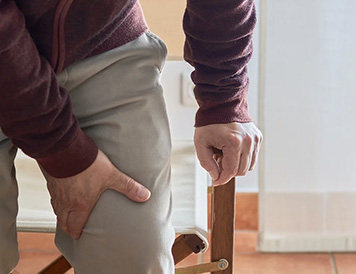
Partial Knee Replacement
For individuals with osteoarthritis confined to a small section of the knee, particularly the medial compartment, partial knee replacement can provide an ideal solution. Based on the specific characteristics of your knee, including minimal leg angulation, an intact ACL, and other established criteria, a partial knee replacement may be a suitable option.
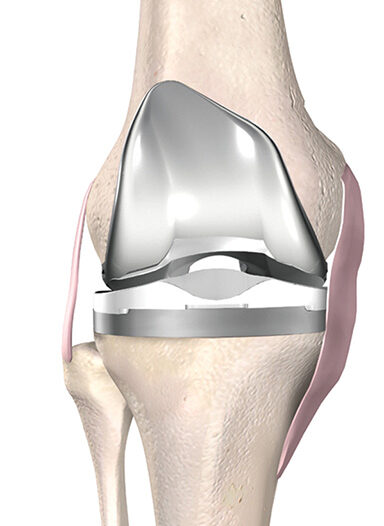
Robotic Assisted Surgery
Robotic-assisted surgery is a further development of technology used in knee replacement. Why was robotic-assisted surgery developed? It evolved for our patients. Joint replacements can still fail. The robot-assisted surgery, such as MAKOplasty, allows for even greater accuracy and reduced soft tissue damage.
Robotic-assisted surgery for unicompartmental knee replacements leads to a lower rate of revision (re-do) surgery at 7 years in the Australian Orthopaedic Association National Joint Replacement Registry (AOANJR).
The AOANJR currently does not show a statistically significant difference in revision rates at 5 years between all robotic-assisted total knee replacement and those done without assistive technology. However, if current trends continue a statistically significant result in favour of robotic-assisted Total Knee replacement will appear in future years.
If all other robotic systems are excluded, the MAKOplasty Total Hip replacement with patellar resurfacing has a revision rate of 1.5% at 5 years. This is the lowest rate (best result) of all the Total Knee Replacements currently available.
kinematic Knee replacement
Kinematic alignment is a method to place the knee in the optimal position for joint and ligament function. The surgeon needs to choose the depth, angle, and rotation of the bone cuts for the best prosthesis position. Technology, particularly robotic assisted surgery, allows this to be done accurately and efficiently.
Revision (re-do) knee replacement
Knee replacements and reconstructions may need to be re-done. This is called a revision. This can be due to failure of the first surgery due to malposition, mechanical failure, infection or trauma.
This is why we often say "your best replacement is your first".
Revision procedures require careful assessment and planning to address multiple issues. You need a highly qualified & experienced team for this more complex surgery. This may include anaesthetists, infectious diseases specialists, physicians, rehabilitation specialists & allied health professionals.
Dr Hamish Gray has further training in complex revision surgery & regularly performs these revisions. We accept referrals from General Practitioners and other specialists to perform this surgery.
High tibial osteotomy
High Tibial Osteotomy (HTO) is a surgical procedure that involves a controlled reshaping of the tibia (shinbone) to shift the weight-bearing axis of the knee joint. The objective is to relieve pain by redirecting weight distribution away from the arthritis compartment. A HTO can help to reduce pain and improve knee function, allowing you to regain mobility and enjoy a more active lifestyle
ACL repair and reconstruction
Anterior Cruciate Ligament [ACL] tears are one of the most common injuries. For some it can be managed non-operatively. For others repair or reconstruction are preferred. High quality surgery with a low rate of failure needs individualised assessment. In this time of financial strain understanding your occupation, return to work needs and the demands of your lifestyle is very important.
An understanding of the mechanics involved in your sport (especially pivoting movements), your desired level of return to sport, your lifestyle and work. All ACL injuries need a long rehabilitation. The goals are return you to activities without putting the repair at risk of failure ACL sporting injuries are further scaffolded by your coaches and a more intensive rehabilitation.
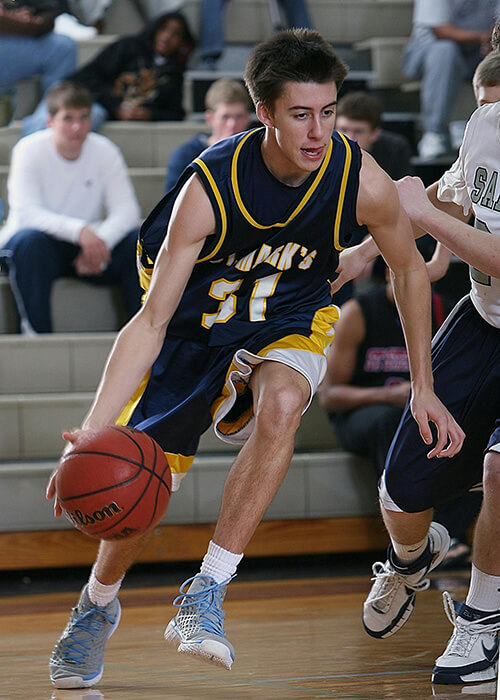
ACL Revision
While ACL reconstruction surgery is generally successful, complications can occur in certain cases, requiring a procedure known as ACL revision surgery.
In the course of preparing for an ACL revision, determining the initial cause of the reconstruction failure is essential. This is accomplished using a combination of diagnostic tools including MRI, X-rays, CT scans, and a detailed physical examination.
Once the root cause is pinpointed, an individualised, strategic plan for revision surgery is formulated. This may be indicated due to factors such as failure of fixation, graft failure, excessive scar tissue known as arthrofibrosis, or direct trauma to the affected area.
Medial meniscus repair
Over time, or due to injury, the meniscus may suffer from tears, which has the potential to affect the integrity of your knee joint, leading to symptoms such as cartilage damage, swelling, or sensations of clicking or locking within the knee.
Meniscus repair begins with diagnostic arthroscopy, which allows for a detailed inspection of the damage within the knee joint. Following this, the restoration may involve suturing the torn meniscus or performing a careful meniscal resection to remove any unstable fragments, preserving as much of the healthy meniscus as possible.
This surgical intervention has been designed to alleviate discomfort, restore function, and ultimately return you to your daily activities with improved knee stability and mobility.
arthroscopy
Knee arthroscopy is a procedure involving the placement of a telescope through a small keyhole incision, allowing for a thorough inspection of the knee. This telescope is connected to a video monitor, providing a clear visualization of the joint. Additionally, fine instruments can be inserted through one or two small incisions to address specific knee issues. Knee arthroscopy serves both diagnostic and treatment purposes, with a primary focus on addressing a torn meniscal cartilage, which is the most common reason for this procedure.
Sports Injuries
- ACL injury assessment for operative or non-operative treatment
- Paediatric and adolescent ACL injuries, including elite athletes
- Knee multi-ligament surgery
- Meniscus repair
- Reattachment of hamstring tendon
- Reattachment of quadriceps tendon
If you would like your privacy protected during your attendance please ring ahead so we can streamline your visit to our rooms.
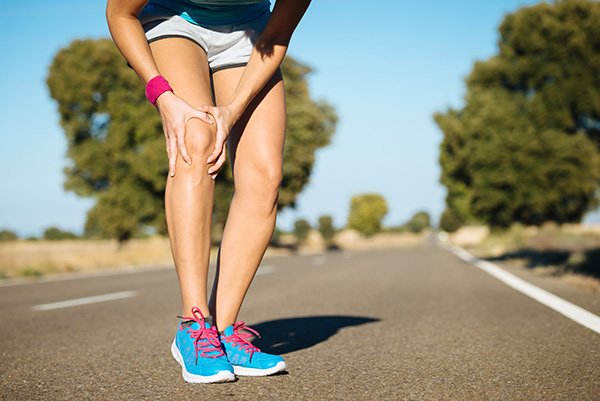
ACL Repair in Adolescents
Dr Gray treats ACL injuries down to 10 years of age. ACL repair in adolescents is a carefully considered procedure that addresses the unique needs of younger patients whose bodies are still developing. The primary goal is to restore stability to the knee, allowing for the safe return to sport without long-term joint instability or risk of further injury. Throughout the process, young patients receive the highest level of care, using precise, evidence-based approaches to both surgery and rehabilitation that are tailored to the unique requirements of growing bodies. The aim is to get adolescents back on their feet, moving confidently and enjoying their active lifestyle again.
infections
Requiring urgent investigation and treatment of the infections of the knee joint with knee replacement or other implants?
Your treating doctor needs to contact Dr Gray directly as soon as possible when infection or fracture of a prosthesis is identified, including superficial infections of skin.
knee trauma and fractures
Fractures of the tibia, tibial plateau, and distal femur can all be managed by Dr Gray. Transfers from public hospitals can be facilitated.